Asus PA328Q ProArt 32-inch UHD Monitor Review
Asus has added a 32-inch Ultra HD display to its ProArt series. The PA328Q sports a super-sharp IPS panel and a precise factory calibration. Today we test it in our labs.
Why you can trust Tom's Hardware
Grayscale Tracking & Gamma Response
Our grayscale and gamma tests are described in detail here.
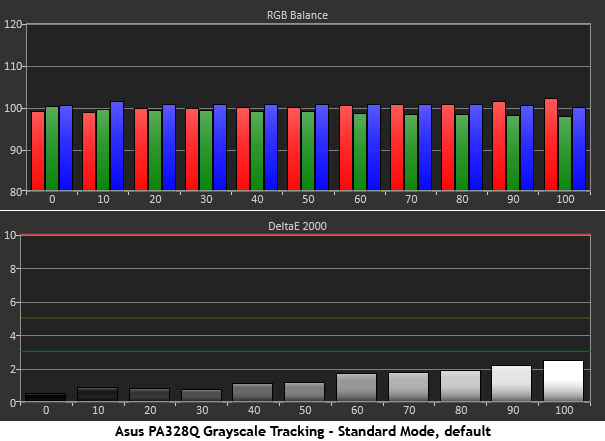
The PA328Q arrived at our lab in its Standard mode. As you can see there are no visible grayscale errors and calibration really isn’t necessary. In this mode you can alter the color temp via presets but if you want access to the gain and offset sliders you’ll have to switch to User.
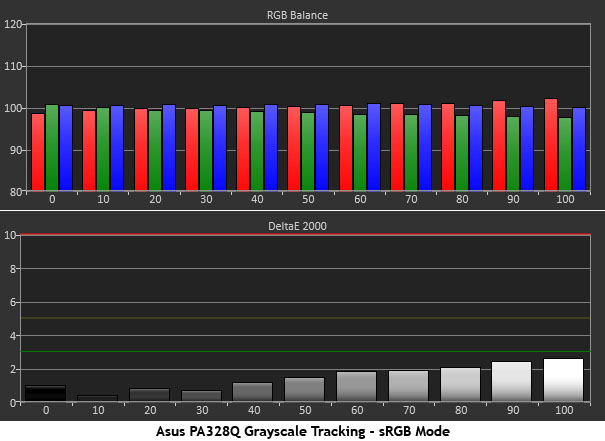
sRGB mode looks almost exactly the same as Standard. Again there is no need for adjustment which is good because no adjustments are available except hue which provides no benefit.
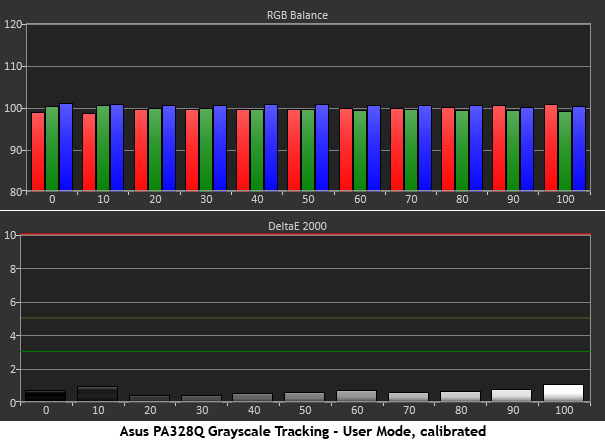
If you must tweak as we do, the User mode yields even better grayscale tracking. You won’t be able to see a difference with the naked eye but if want every possible ounce of performance from the PA328Q, calibration is the way to do that.
Here is our comparison group.
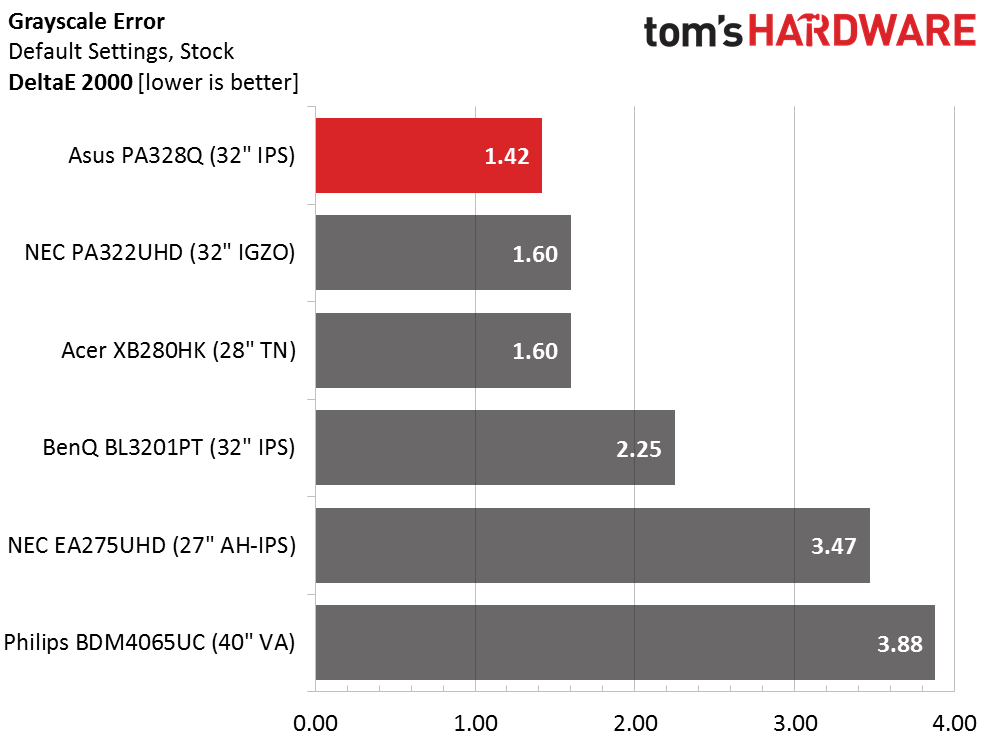
1.42dE represents the Standard mode. Asus claims errors of less than two Delta E and our sample achieves that with room to spare. In the sRGB mode we measured 1.52dE which is only a tiny bit higher. Either way the PA328Q meets its advertised performance handily.
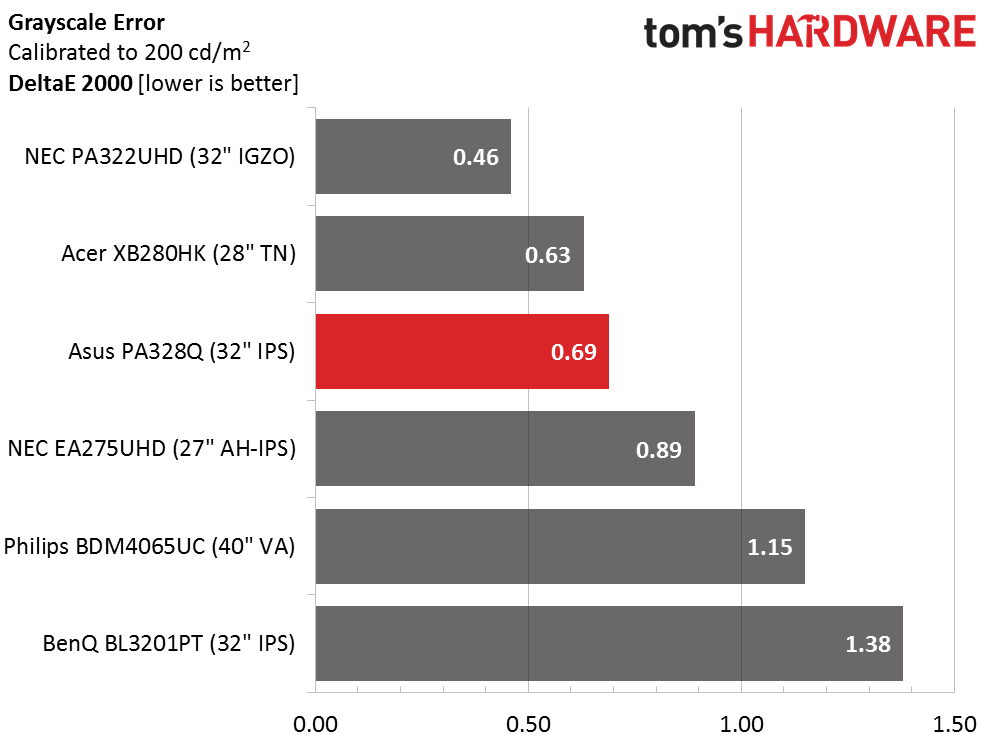
Our calibration turned excellent performance into slightly more excellent performance. This improvement does more to satisfy ego than anything else.
Gamma Response
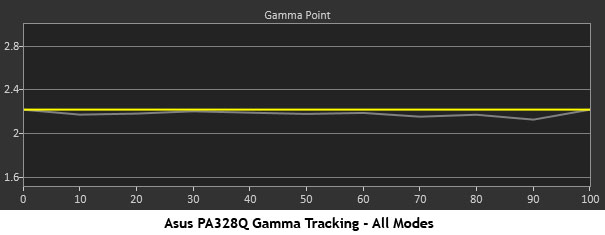
Regardless of picture mode, gamma tracks to near-perfection. You can change the preset to 1.8 or 2.4 from the default of 2.2. In both cases tracking stays flat as it should. Since we’re picking nits here we do wish there were a BT.1886 option for those editing film and video content.
Here is our comparison group again.
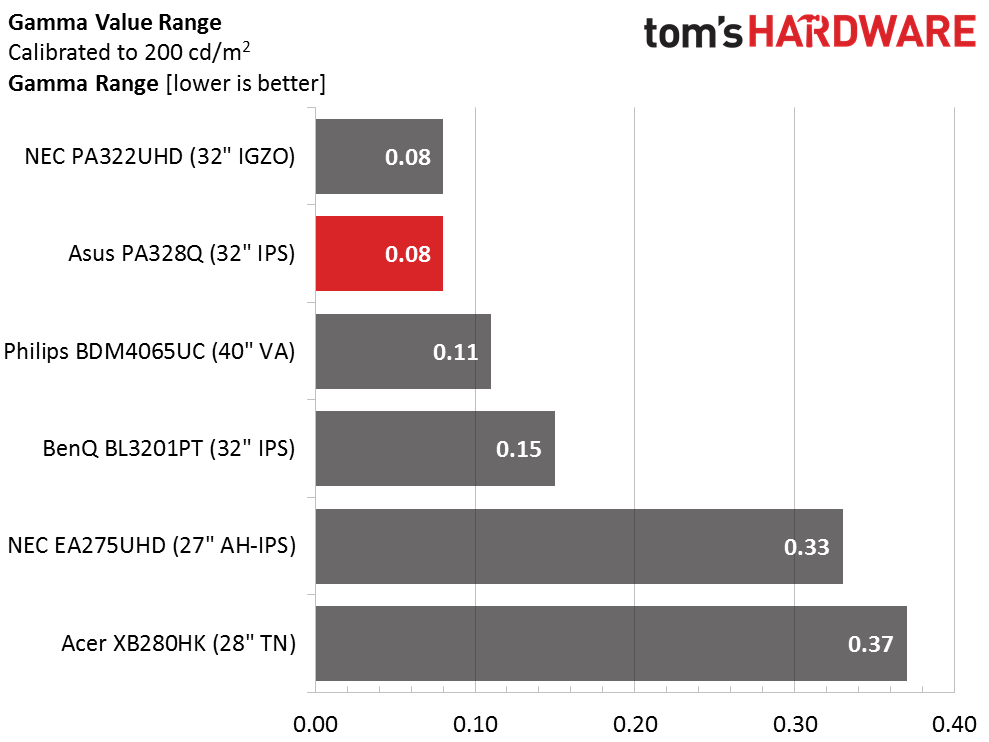
A .08 deviation in values is almost nothing and that dip happens mainly at the 90-percent brightness level. Gamma tracking doesn’t get much better than this.
We calculate gamma deviation by simply expressing the difference from 2.2 as a percentage.
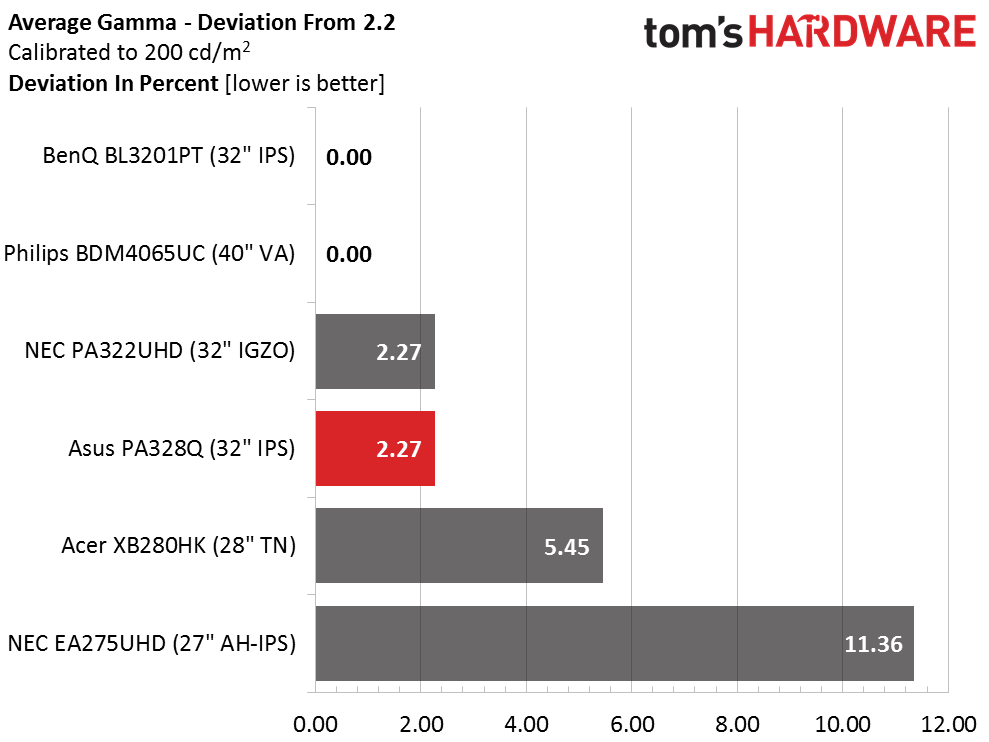
The average value is 2.15 which represents a 2.27-percent variation from the 2.2 spec. Again this is such a tiny amount it’s barely worth reporting.
Current page: Grayscale Tracking & Gamma Response
Prev Page Brightness & Contrast Next Page Color Gamut & PerformanceStay On the Cutting Edge: Get the Tom's Hardware Newsletter
Get Tom's Hardware's best news and in-depth reviews, straight to your inbox.

Christian Eberle is a Contributing Editor for Tom's Hardware US. He's a veteran reviewer of A/V equipment, specializing in monitors. Christian began his obsession with tech when he built his first PC in 1991, a 286 running DOS 3.0 at a blazing 12MHz. In 2006, he undertook training from the Imaging Science Foundation in video calibration and testing and thus started a passion for precise imaging that persists to this day. He is also a professional musician with a degree from the New England Conservatory as a classical bassoonist which he used to good effect as a performer with the West Point Army Band from 1987 to 2013. He enjoys watching movies and listening to high-end audio in his custom-built home theater and can be seen riding trails near his home on a race-ready ICE VTX recumbent trike. Christian enjoys the endless summer in Florida where he lives with his wife and Chihuahua and plays with orchestras around the state.
-
picture_perfect Oh my. I'd use this one as a nice digital picture frame. Not gaming because 1080p 144hz gets you much less lag, persistence blur and stutter. These resolutions are really too high for decent gaming.Reply -
JamesSneed This isn't a gaming monitor. It inst very high priced for a professional grade 32 inch monitor with 100% sRGB.Reply -
jasonelmore i use pro-arts as gaming monitors.. the PA 248Q is what i roll withReply
I would have seriously considered this monitor for gaming and creative work, but the lack of adobe RGB on a $1300 monitor kills the deal. -
Pibee If you're going to review a PA Professional grade monitor whose advertizing and promotional claims touts 100% Adobe RGB I would think you would have underscored the fact that it only achieves sRGB as a major issue. Instead you've glossed over it and reviewed the monitor as though such claims were never made and or never existed. Doesn't it say on the box 100% Adobe RGB? And yet nothing about it is mentioned. Not much of a review then is it.Reply
http://www.tomshardware.com/news/asus-proart-pa329q-uhd-display,29225.html
http://pcdiy.asus.com/2015/06/asus-pa329q-new-professional-4k-monitor-for-image-enthusiasts-editors/
https://www.asus.com/ca-en/Monitors/PA329Q/
-
mosc What's all the fuss about 100% coverage of adobe RGB?Reply
"If you need a 32-inch UHD monitor with a wide gamut only the NEC PA322UHD and the Dell UP3214Q have it."... and they cost twice as much.
Can you find a 32" 4K monitor for less money that covers more? No. OK then what's your criticism?